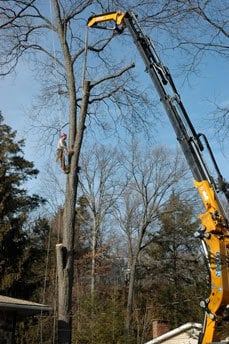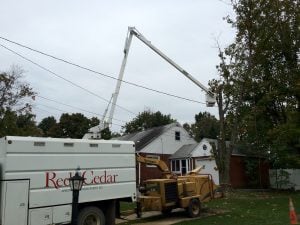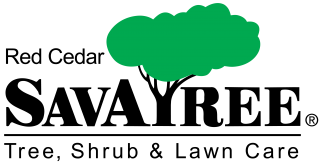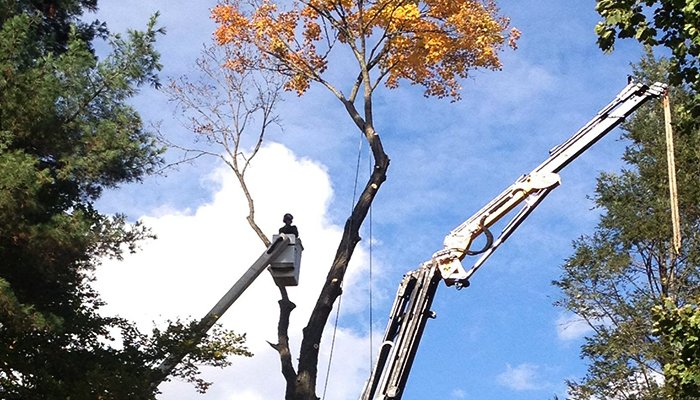When it comes to tree maintenance, you may think that tree trimming is one of these tasks that can easily be done without the help of a professional. While it may be true that you can conquer tree trimming on your own, there are several important things to consider before beginning. Often homeowners are unaware that there is in fact a proper way to trim trees, resulting in some common tree trimming mistakes. Without training or extensive tree knowledge, it is important to do some research on how to properly trim your trees during your planning phase to help avoid these mistakes.
Mistake # 1 – Randomly Selecting Branches To Trim
Just trim or get rid the branches that look dead, too long, or randomly choose, right? Well – no. When your Arborist performs a tree trimming service, they will pay very close attention to the branches which they choose to remove, how far they cut them, and the method to which they cut them. If your cuts are not calculated to properly meet the end goal set for your tree trimming project, the result can be less than desirable. In fact, your tree may become weakened and misshapen if the wrong branches are cut and/or they are not trimmed properly.
Mistake # 2 – Cutting Through The Branch Collar
 What is a branch collar? Well, that’s a great question, and one you should definitely have answered before you begin tree trimming. The branch collar in the portion of the branch that is closest to its base. This collar contains a large bundle of vascular tissue, and if cut, it can lose a lot of sap, resulting in a wound that can weaken your tree and take a long time to heal. This often happens when homeowners attempt to cut branches flush with the trunk. This is not a great method for tree trimming, and you should always aim to leave behind at least a 1-inch stub, as to avoid cutting the branch collar. This will allow for the tree to still get necessary nutrients, water, and sunlight (a tree gets these essential elements from their branches as well as their roots).
What is a branch collar? Well, that’s a great question, and one you should definitely have answered before you begin tree trimming. The branch collar in the portion of the branch that is closest to its base. This collar contains a large bundle of vascular tissue, and if cut, it can lose a lot of sap, resulting in a wound that can weaken your tree and take a long time to heal. This often happens when homeowners attempt to cut branches flush with the trunk. This is not a great method for tree trimming, and you should always aim to leave behind at least a 1-inch stub, as to avoid cutting the branch collar. This will allow for the tree to still get necessary nutrients, water, and sunlight (a tree gets these essential elements from their branches as well as their roots).
Mistakes # 3 – Using Dull and Unsanitized Tools
You may think – my tree is outdoors and a part of nature, why would I need sanitized tools? Well, contrary to popular belief, cutting a tree with dirty tools can lead to infectious fungi and bacteria, similar to if you were to make an incision on a human or animal without properly sanitizing. This is especially true if the tree you previously cut with the same tools was diseased or sick in any way, as this can spread from tree to tree. Similarly, cutting a tree with dull tools can lead to jagged marks and wounds that will be harder to heal. Making several uneven cuts can lead to damages to important parts of the tree, and interrupt how it gets it nutrients. Additionally, when we discuss “cleanup” and sanitization, we are not just talking equipment. After you’ve completed your tree trimming, you want to remove fallen branches, leaves, and other debris, as these can be grounds for fungi and insects to harbor around the base of your tree.
Mistake # 4 – Trimming Too Much Or Too Little
You may have already determined at this point that there is a very precise method to proper tree trimming. So, it may not come as a surprise that trimming too much or too little can hurt your tree.
- Too Much – Taking away too many branches can leave your tree trunk exposed to too much sunlight and it can literally cut away a tree’s supply of nutrients that it needs to survive. Additionally, tree topping is NEVER the correct tree trimming method as it leaves trees weak, unattractive, and on a path to a long, hard road to recovery.
- Too Little – Trimming just the ends of the branches may not remove enough of their weight to achieve your initial pruning goal and/or prevent potential hazards. Trimming just the ends is particularly ineffective when pruning decayed tree branches, as this decay may be inside where you can’t see it. If you are not properly pruning diseased areas/limbs of your tree, this could lead to the spreading of disease throughout your tree and/or potential hazard if the branch is too weak for its weight.
Mistake # 5 – Not Trimming At The Correct Time Of Year
 Just like there is a time of year that’s best for planting, there are also times of year that are best for tree trimming. Winter is typically a good time for tree trimming because this is their dormant months. Pruning in winter will encourage spring growth. Summer is typically fine for pruning trees too. But, during the warm months when insects are most active, you’ll want to be mindful of sap from fresh wounds that could attract these pests, and potentially lead to the spreading of disease. Fall is often not the best time for tree pruning because there are more fungi present in the cool, damp air. In addition to a higher presence of fungi, trees also heal slower during this time. This dangerous combination creates a high susceptibility to disease.
Just like there is a time of year that’s best for planting, there are also times of year that are best for tree trimming. Winter is typically a good time for tree trimming because this is their dormant months. Pruning in winter will encourage spring growth. Summer is typically fine for pruning trees too. But, during the warm months when insects are most active, you’ll want to be mindful of sap from fresh wounds that could attract these pests, and potentially lead to the spreading of disease. Fall is often not the best time for tree pruning because there are more fungi present in the cool, damp air. In addition to a higher presence of fungi, trees also heal slower during this time. This dangerous combination creates a high susceptibility to disease.
If you are considering tackling some tree trimming projects on your own, it is important to take the time to conduct proper research, and be mindful of avoiding these common mistakes. When pruning your trees, it is essential to make sure you are properly and strategically doing so, not only to protect your tree, but also to avoid potential damages to the surrounding property. When hiring a certified Arborist, like those at Red Cedar, you can feel confident that your pruning project will be done correctly, and with your tree’s specific needs in mind. Our Arborists are ISA (international Society Of Arborists) certified, and understand how intricate a tree trimming job is. If not done correctly, you can potentially cause incurable injury to your tree. Contact Red Cedar for your free consultation, and let us ensure that your trees are pruned correctly, and that the above costly mistakes are avoided!


